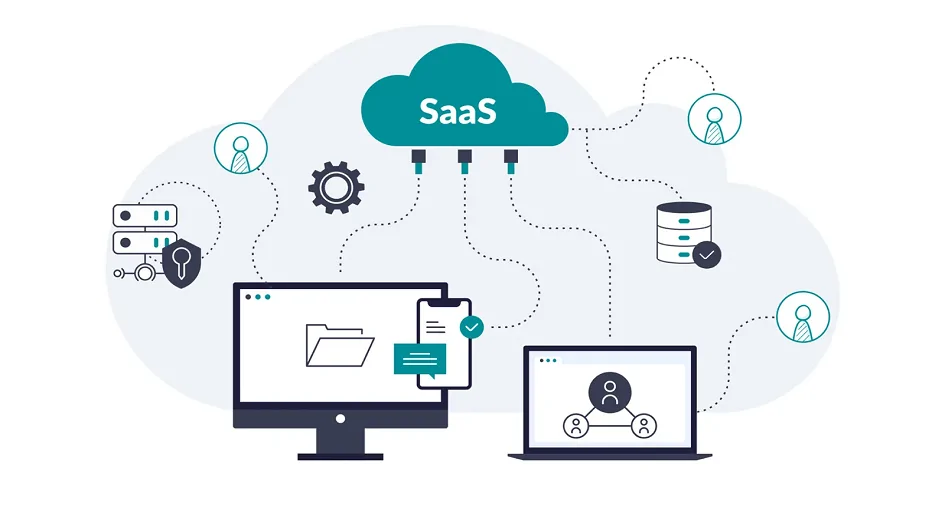
The Role of SaaS Management Software in Enhancing Security
In today’s fast-paced digital era, businesses increasingly rely on Software-as-a-Service (SaaS) applications to streamline operations, improve collaboration, and enhance productivity. While SaaS solutions offer numerous benefits, they also introduce security and compliance challenges that organizations must proactively address. With sensitive business data being shared and stored across multiple cloud-based applications, the risk of data breaches, unauthorized access, and non-compliance with industry regulations becomes a major concern. As organizations expand their SaaS portfolios, managing these applications manually becomes inefficient and error-prone. This is where SaaS management software plays a pivotal role.
By providing centralized oversight of all SaaS applications, businesses can gain better control over access permissions, monitor software usage, and ensure compliance with data protection regulations. Effective SaaS management tools help mitigate security risks such as shadow IT, data leaks, and security misconfigurations, enabling businesses to operate safely in a cloud-driven environment. Security and compliance are not just IT concerns; they impact an organization’s reputation, legal standing, and financial stability. Regulatory bodies such as GDPR, HIPAA, and SOC 2 impose stringent requirements on data handling and protection. By leveraging the best SaaS software solutions and ensuring proper SaaS software training, businesses can significantly enhance their security posture while maintaining regulatory compliance.
This article explores what SaaS management is, how it strengthens security and compliance, and presents leading SaaS management software examples to help organizations make informed decisions about their IT governance strategies.
Enhancing Security with SaaS Management Software
SaaS management enhances security by implementing access control mechanisms like Single Sign-On (SSO) and Multi-Factor Authentication (MFA) to restrict unauthorized access to sensitive applications. It also helps detect and prevent shadow IT, where employees use unauthorized SaaS applications, thereby preventing data breaches. Modern SaaS management tools also provide data encryption features and monitor data transfers to ensure compliance with security standards. They also automate security audits and compliance checks, ensuring all SaaS applications adhere to regulatory requirements, minimizing legal risks and potential fines. Overall, SaaS management helps organizations protect sensitive business information and maintain compliance with regulations like GDPR, HIPAA, and SOC.
What is SaaS Management?
SaaS management refers to the process of overseeing and optimizing an organization’s SaaS applications. This includes tracking software licenses, monitoring usage, ensuring compliance, and managing security risks. With companies using hundreds of SaaS applications across different departments, manual tracking becomes inefficient and prone to security vulnerabilities. SaaS software automates these processes, providing real-time insights into software usage, access controls, and compliance status.
Ensuring Compliance with SaaS Management Software
Following are the compliance with SAAS software.
1. Regulatory Compliance Management
SaaS management helps businesses track compliance with industry regulations. It provides dashboards and reports that highlight potential compliance risks, making it easier for organizations to take corrective actions.
2. License Management and Cost Optimization
One key aspect of compliance is ensuring that SaaS licenses are up-to-date and used appropriately. SaaS management tools monitor software subscriptions and prevent unauthorized usage, reducing legal risks associated with unlicensed software.
3. Incident Response and Security Monitoring
Many SaaS management tools include security monitoring features that detect and respond to suspicious activity. By integrating with security information and event management (SIEM) systems, these solutions enhance an organization’s ability to handle security incidents efficiently.
4. Vendor Risk Management
Organizations rely on third-party SaaS providers for critical business operations. SaaS management assesses vendor security policies, ensuring that external applications meet internal security standards and compliance requirements.
Best SaaS Management Software Solutions
Several SaaS software solutions offer robust security and compliance features. Here are some of the best SaaS software tools available:
- Zylo – Provides comprehensive SaaS visibility, compliance tracking, and automated security risk assessments.
- BetterCloud – Focuses on SaaS security with access control, data protection, and compliance automation.
- Torii – Helps detect shadow IT, manage licenses, and enforce security policies.
- Blissfully – Offers compliance tracking, vendor risk management, and security audit automation.
- Productiv – Enhances SaaS governance with real-time usage analytics and compliance monitoring.
Importance of SaaS Management Software Training
To fully leverage SaaS software, organizations must invest in SaaS software training. Employees and IT teams should be trained on:
- How to use SaaS management tools effectively
- Best practices for securing SaaS applications
- Compliance requirements and reporting
- Identifying and mitigating security threats
Training ensures that businesses maximize the security and compliance benefits of their SaaS management solutions, reducing risks associated with misconfiguration and human error.
To sum up, in an era where businesses rely heavily on SaaS applications, security and compliance cannot be overlooked. SaaS management software plays a vital role in enhancing security by enforcing access controls, preventing shadow IT, and ensuring data protection. Additionally, it helps organizations stay compliant with industry regulations through automated audits and vendor risk management. By implementing the best SaaS software solutions and investing in SaaS management training, businesses can safeguard sensitive data, minimize security risks, and ensure regulatory compliance. As the SaaS landscape continues to evolve, having a robust SaaS management strategy will be crucial for organizations aiming to maintain a secure and compliant IT environment.




